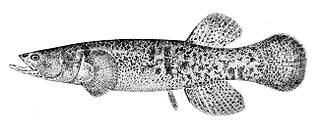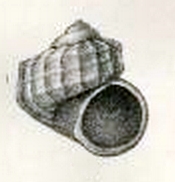Related Research Articles

Strabo was a Greek geographer, philosopher, and historian who lived in Asia Minor during the transitional period of the Roman Republic into the Roman Empire.
Mater Admirabilis is a fresco depicting the Virgin Mary, at the Trinità dei Monti, a church in Rome. It was painted by a young French girl, Pauline Perdreau, and has been associated with several miracles.

Melanoides admirabilis is a species of freshwater snail with a gill and an operculum, an aquatic gastropod mollusk in the family Thiaridae.

Xenarchus of Seleucia in Cilicia, was a Greek Peripatetic philosopher and grammarian. Xenarchus left home early, and devoted himself to the profession of teaching, first at Alexandria, afterwards at Athens, and last at Rome, where he enjoyed the friendship of Arius, and afterwards of Augustus; and he was still living, in old age and honour, when Strabo wrote. Xenarchus disagreed with Aristotle on many issues. He denied the existence of the aether, composing a treatise entitled Against the Fifth Element. He is also mentioned by Simplicius, by Julian the Apostate, and by Alexander of Aphrodisias.

Mater ter admirabilis, literally "Mother thrice admirable", is a Latin invocation from the Litany of the Blessed Virgin Mary.
The year 1589 in science and technology included a number of events, some of which are listed here.

Liotia is a genus of very small sea snails, marine gastropod mollusks in the family Liotiidae.
Clypeomorus admirabilis is a species of sea snail, a marine gastropod mollusk in the family Cerithiidae.

Clypeomorus is a genus of sea snails, marine gastropod mollusks in the subfamily Cerithiinae of the family Cerithiidae.

Jardines del Hipódromo is a barrio of Montevideo, Uruguay.

Iotaphora admirabilis is a species of moth of the family Geometridae first described by Charles Oberthür in 1884. It is found in south-eastern Siberia, Korea and Taiwan.

Dallia is a genus of mudminnows native to Russia and Alaska. Molecular data indicates the genus is more closely related to Esox and Novumbra than Umbra.Dallia diverged from Novumbra + Esox approximately 66 million years ago.
Xenarchus is a genus of moths of the Aididae family.
Xenarchus carmen is a moth of the Aididae family. It is found in Brazil and the Guianas.

Liotia admirabilis is a species of sea snail, a marine gastropod mollusk in the family Liotiidae.
Pheia admirabilis is a moth in the subfamily Arctiinae. It was described by Felix Bryk in 1953. It is found in the Amazon region.

Tachiraptor is a genus of carnivorous theropod dinosaurs found in the early Jurassic period La Quinta Formation of Venezuela. It includes one species, Tachiraptor admirabilis, described from a fossilized tibia and ischium. They were small bipedal dinosaurs, with a deduced total body length of just over 1.5 m (4.9 ft). They were likely generalist predators, preying on smaller vertebrates like other dinosaurs or lizards.

Syrbula admirabilis, known generally as admirable grasshopper, is a species of slant-faced grasshopper in the family Acrididae. Other common names include the handsome grasshopper and handsome locust. It is found in Central America and North America.

Drosera admirabilis, commonly referred to as the "floating sundew", is in the carnivorous us plant family Droseraceae. The nickname "admirabilis" was first used in literature by Paul Debbert in 1987 and was derived from how "admirable" the plant appears when it reaches a fully matured specimen. Structurally similar to Drosera aliciae, and Drosera cuneifolia, the D. admirabilis grows in a single tight rosette-shaped leaf bundle. The leaves widen towards the end and have rounded tips. Leaves lay horizontally under proper lighting conditions. Like many other African sundews, D. admirabilis is a perennial. D. admirabilis has outer tentacles like those of Drosera glanduligera, Drosera sessilifolia and Drosera burmannii which briefly after stimulation bend towards the prey.
Begonia admirabilis is a species of is a species of plant in the family Begoniaceae. It is endemic to Brazil.
References
- ↑ Beccaloni, G.; Scoble, M.; Kitching, I.; Simonsen, T.; Robinson, G.; Pitkin, B.; Hine, A.; Lyal, C., eds. (2003). "Xenarchus admirabilis". The Global Lepidoptera Names Index . Natural History Museum . Retrieved May 15, 2018.
| | This article relating to the superfamily Zygaenoidea is a stub. You can help Wikipedia by expanding it. |